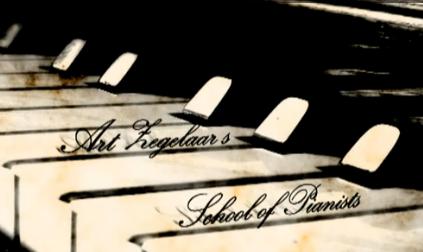Pastorale
I saved this one for Christmas, because it is so rewarding to perform or play this Sonata in December. Especially the last rondo movement makes all bells ringing and this Sonata is slowly building up to it. Again the title has been given by his audience.
It has an Opus number of its own and already that is an indication for the importance of this Sonata. It is one of Beethoven's best.
It is extremely clever to start with a D7 chord, whilst the movement is in the key of D major. The steady bass notes hold out for the tonal key.
The movement - although definitely Sonata-form - is transcending the classical harmonic framework and Beethoven is playing a trick with the tonal centre all the time, something which composers like Schumann and Liszt will do. He does this to end the exposition where he started: in D major with the first theme and not with a Coda in the key of the second theme.
This second theme is hiding its real tonal centre also.
Finally Classical Sonata form has found its perfection. A continuous flow of ideas leading full circle to the beginning. This Sonata is perfect.
The following Andante movement is my absolute favourite:
The legato right hand against the staccato left hand pattern is stunning. The expert peddler can excel here, because the first right hand chords must be legato and yet the left hand staccato can't be compromised with. After the fourth semiquaver a very quick pedal before releasing the right hand is very exciting, but not easy.
The culmination in the demisemiquavers and the key of D-minor takes care off one of Beethoven's most beautiful slow movements.
In the third Scherzo movement Beethoven plays the same trick with the tonal centre. The key is D major again, but the starting F#'s over 4 bars conceals it.
The Trio - being in B minor - likewise starts on the Dominant and that's again F#! This is pure genius!
And then we have the final Rondo!
This Rondo is an indication the late Beethoven is breaking through. This whole Sonata is the top of his middle period anyway. As traditional as this Sonata is in form as revolutionary it is in harmonic structure and texture. The late Beethoven must have found his calling writing this very Sonata.
Do you notice the D's in the left hand as reminder of the D's in the first movement? The 'ma non troppo' indication you have to take very seriously. Too fast a speed would spoil much of this movement. Beethoven takes his time for everything happening in this Sonata and so should you.
Although again this Rondo is traditional in form it goes far beyond that. The thematic elements are leitmotivs and contrasting sections work as a second Rondo motive. Finally - we might say - Beethoven has discovered the Rondo as to this point he has struggled with that form and very often deviated into Sonata form.
Finally Beethoven has discovered what you can do with a Rondo. Leading up to the Waldstein he will continue what he has discovered here.
To hear this Sonata you can follow this link. Not necessarily my favourite interpretation as it lacks some of my own emotions associated with this Sonata. Very classical though. I couldn't find Andreas Schiff:
http://www.youtube.com/watch?v=guzBVbU2JxY




















































